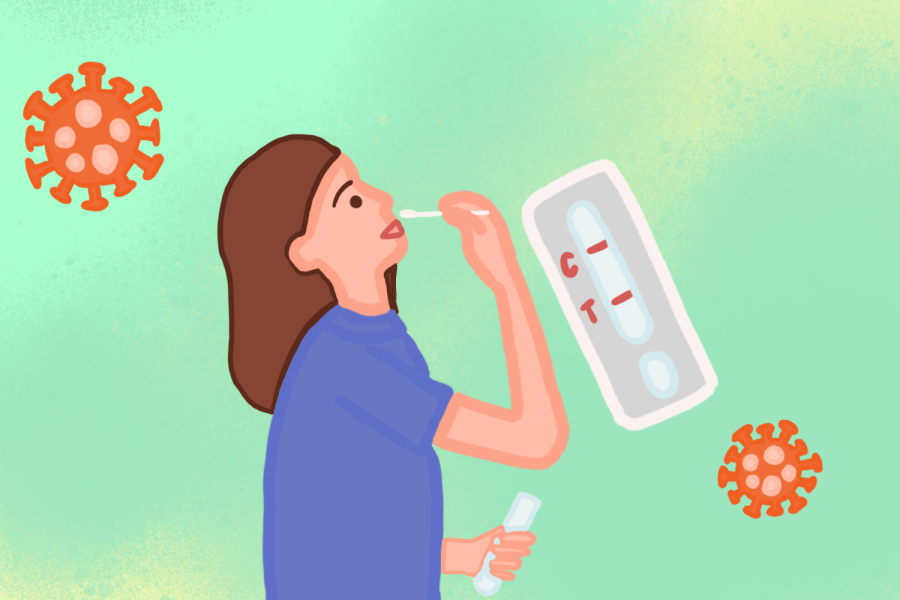South Korea limits PCR testing as Omicron numbers skyrocket
Jan 27, 2022
On Jan. 7th, the South Korean Central Disaster and Safety Countermeasure Headquarters (CDSCH) announced its plans to alter the availability of official COVID-19 tests. This change was an inevitable response to the skyrocketing numbers of COVID-19 patients and the highly infectious Omicron variant becoming the dominant strain in South Korea. As the COVID-19 cases continue to increase, the Korean government faces the challenge of accommodating testing for all those in need.
From Jan. 26th, the new testing policies will be enacted to balance the need for testing with available care. According to the CDSCH, only elderly over the age of 60, those who were positive in at-home testing, and people who were in close contact with an infected person will be prioritized for PCR testing. Those who do not fit this classification will receive a rapid antigen test using a test kit at a screening clinic and other local primary medical institutions.
“As someone who has been tested about five times for a multitude of reasons, I strongly believe that not allowing everyone to be tested is upsetting,” Andrew Nam (11), frequent COVID-19 testee, said. “One big reason behind getting tested so many times is that I do not want to expose the people that I care about, and COVID-19 testing is the best way to ensure the prevention of spreading. Without testing all the individuals who were exposed, I fear that I may spread the virus to high-risk individuals like my grandparents and jeopardize their safety.”
While some people attributed the need for open PCR testing to protecting loved ones, others argued that at-home rapid antigen tests are inaccurate.
“Even though at-home tests are somewhat effective in representing the presence of COVID-19, its accuracy is far from that of government-run testing,” Eric Cho (9), biology student, said. “Often, at-home tests show false positives as well as false negatives, which leads to people not having a clear idea about their infection status. However, I believe that at-home tests could be a useful addition, not replacement, for the government-run tests for the purpose of convenience.”
In addition to testing being regulated, medical treatment is experiencing changes as well. To prepare for a situation where the numbers continue to spike, the CDSCH plans to expand the number of government managed medical institutions to 400 so that up to 60,000 home-treated patients can be accomodated. Moreover, the CDSCH has revealed its plans to open the outpatient treatment center by mid-February and convert the testing and treatment system so that local hospitals and clinics can perform tests, treatment, and prescription.
“As someone who has seen several people experience COVID-19, I think that facilitating at-home treatment would be a great step ahead,” Sean Choi (11), COVID-19 witness, said. When people near me contracted the Omicron variant, it was not necessary for them to receive residential medical care. By staying home and avoiding contact with other people, they were able to recover with just at-home treatment.”
In the midst of the ongoing struggle with COVID-19, South Korea is altering its stance towards the disease. Along with changes in testing and medical care, the quarantine period will be reduced from ten days to seven for those who completed the vaccination, but more importantly, other policies reviewed to reduce the amount of COVID-19 related restrictions. Ultimately, while Korea implements new policies regarding COVID-19, Korean citizens look forward to a more relaxed state of the nation.
“I think it’s great that South Korea is implementing new policies in response to the Omicron variant,” Jonathan Ames, athletics and activities director, said. “Allocating less severe and asymptomatic patients to local institutions will allow the government to focus on the more at-risk patients who are really in desperate need of care. While there is still a long way to go, I am hopeful that we will get through the pandemic.”







